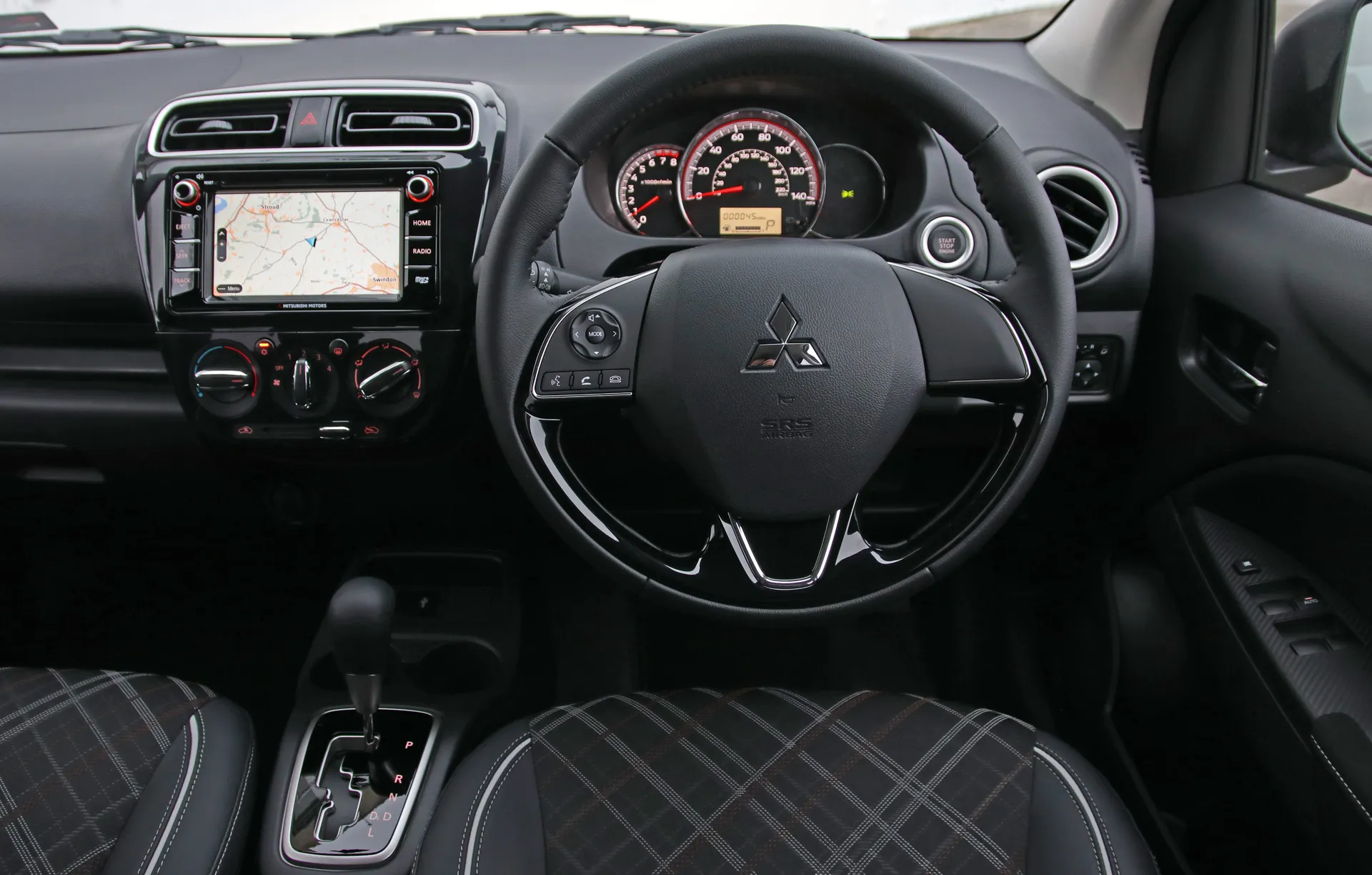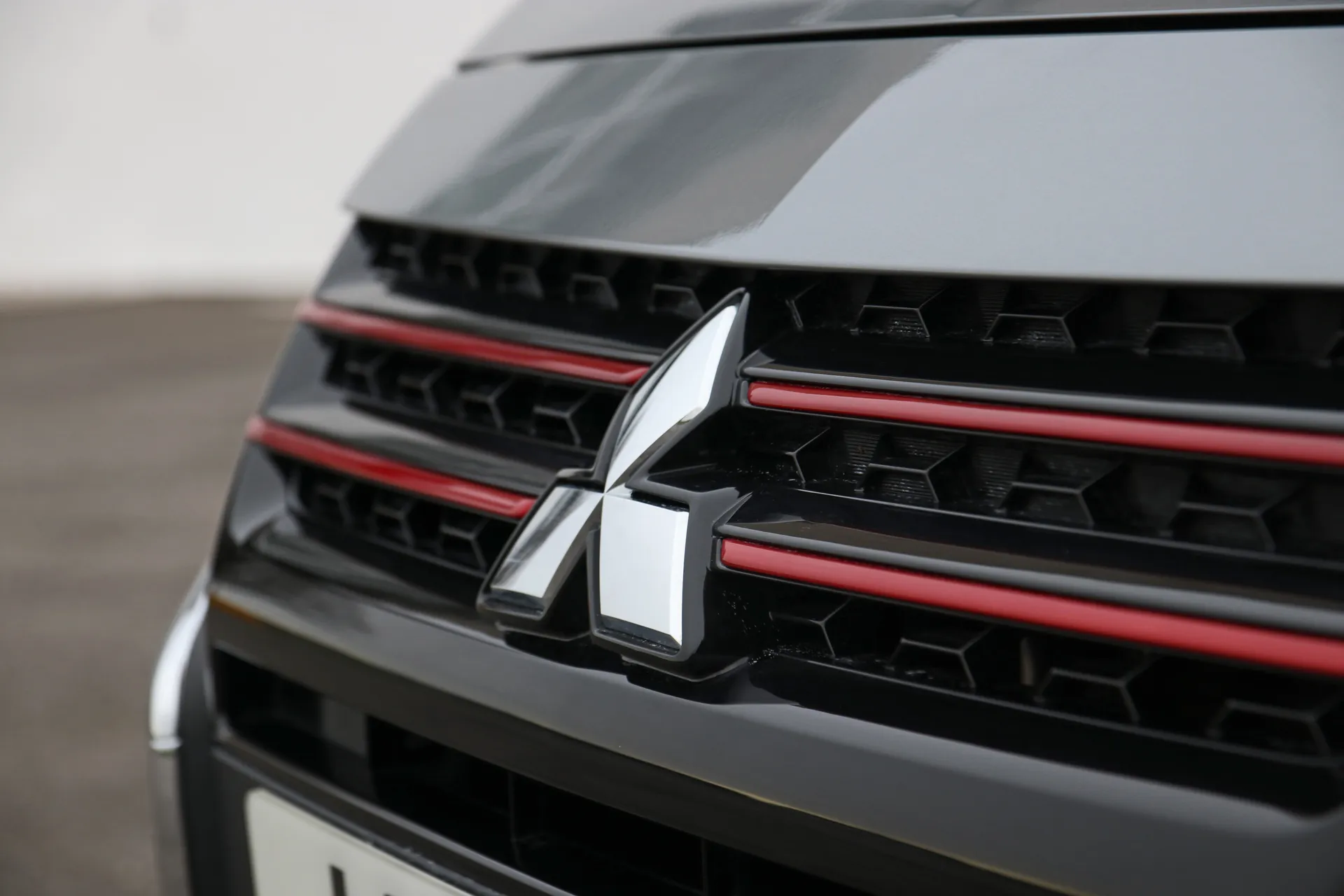Mitsubishi Mirage (2013-2021) Review
Written by Andrew Brady
Quick overview
Pros
- Economical runabout
- Zero tax on pre-2017 models
- Good interior space for a small car
Cons
- Disappointing to drive
- Cheap feeling interior
- Rival hatchbacks do it better for the same money
Overall verdict on the Mitsubishi Mirage
"When designing the Mirage Mitsubishi was clear about the focus for its small car. Fuel economy, CO2 emissions and practicality are what the Mirage is built around. It may not sound exciting but it makes plenty of sense. Unfortunately, that's not enough to give the Mirage appeal and it lags behind the competition in too many key areas."

Despite its compact size, the Fiesta-sized Mirage is surprisingly room inside. The Mirage competes against a wide range of cars from smaller hatches like the Volkswagen Up to larger models like the Suzuki Swift, so it's tricky to directly compare it to any one model.
Put it alongside something like the Nissan Micra and it holds up well though. The driving position is good even though the steering column only adjusts for height, as with most cars this size. The interior is dated in design and feels cheap - this is certainly more utilitarian than design led, but it's reasonably robust and well screwed together.
There are two engines, both three-cylinder petrol units. The entry-level model has a 1.0-litre 71PS but the higher specification models have a 1.2-litre unit with 80PS.
But the real highlight is economy. The 1.2-litre model comes with an automatic engine start/stop system and all models have low rolling resistance tyres and regenerative braking. As a result all emit less than 100g/km of CO2. Economy is 68.9mpg for the Mirage 2 while going for the slightly higher spec Mirage 3 only sees it drop to 65.7mpg. In the real world expect around 64mpg.
It's reasonably well equipped too. The Mirage 1 - the only model with the 1.0-litre engine - is a little sparse but does come with front electric windows and a CD stereo with aux-in and a USB port. The Mirage 2 looks better value as not only does it get the superior 1.2-litre engine (which is also more economical) but also adds electric mirrors, air conditioning and remote central locking.
Overall the Mirage is a competent and comfortable small car that's easy to drive and performs adequately in town and on the motorway. It does lack character though, something which similarly priced alternatives like the trio of the Volkswagen Up, SEAT Mii and Skoda Citigo certainly don't.
The Mirage doesn't outdo them in terms of equipment or price either. So there's very little to make it stand out against the competition. There's plenty of quality for buyers after a small and affordable car and unfortunately the Mirage lags way behind.
heycar has 1000s of used cars for sale, including a wide range of Mitsubishi Mirage cars for sale.
Comfort and design: Mitsubishi Mirage interior
"There's plenty of space for both driver and passenger - including leg and elbow room - while rear passenger space is impressive for a car that's only 3.7 metres long."

Even those around 6ft2 can comfortably sit in the back without smacking their head on the roof or having to train as a contortionist. Getting in and out is easy too thanks the wide opening doors - the Mirage only comes in five-door guise as the demand for three-door versions of small cars is diminishing, so there's no having to clamber into the back.
Quality and finish
Inside, the Mitsubishi Mirage is run-of-the-mill in terms of design but while there's little in the way of flair it does feel solid and well built. The hard plastics on the dash and doors aren't great and the overly large gear lever feels like it's come straight off one of Mitsubishi's big Shogun 4x4s.
At least the steering wheel - an all important point of contact when it comes to first impressions - is pleasant to hold while the stereo and ventilation controls feel of decent quality. But overall, the interior feels cheap and dated.
Space and practicality: Mitsubishi Mirage boot space
The Mirage is practical with plenty of little stowage bins in the front and good sized 235-litre boot. However, unlike rivals such as the Volkswagen Up, there's no clever double-layer boot floor. You notice some cost-cutting here too with a rather thin carpet floor and a flimsy bit of MDF covering the spare wheel well. It's worth noting that the Mirage doesn't get a spare wheel either. Getting rid of it helps save weight so instead you get a can of sealant as part of a 'tyre repair kit'.
Handling and ride quality: What is the Mitsubishi Mirage like to drive?
"The Mirage is quite happy on the motorway and will more than easily keep up with fast flowing traffic, albeit with a bit of work by the little engine."

It's quiet, helped by the aerodynamic shape and despite the light weight it feels stable at high speeds, even in strong winds. It certainly doesn't feel like a small car here. The opposite is true in town where the Mirage is ideal if you have to get into small parking spaces, helped by a tight turning circle and light steering.
However, it's the electric power steering which lets the Mirage down. It lacks response and there's no feel at all, so through corners you have to put in more steering input than you'd expect. It means the Mirage isn't very assured or comfortable on more demanding roads and even roundabouts can catch it out. Front end grip isn't great either. It's a shame as the Mirage rides smoothly and body roll is kept reasonably well in check through bends.
What engines and gearboxes are available in the Mitsubishi Mirage?
In terms of power, neither the 1.0-litre 71PS nor the 1.2-litre unit with 80PS is going to set the world alight. But at least you can rev them as hard as you like and they don't become coarse while the standard five-speed manual gearbox has a nice positive shift.
On paper a 0-62mph time of 11.7 seconds (for the 1.2 engine) may not look great but the engine has plenty of get-up-and-go away from the lights and there's a nice thrum thanks to the fact it's a three-cylinder engine. The 1.2-litre makes the most of its modest 106Nm of torque and pulls really well in gear. The Mirage rarely feels underpowered or sluggish.
MPG and fuel costs: What does a Mitsubishi Mirage cost to run?
"With an emphasis on low weight, aerodynamics and economy - the Mirage is a cheap car to run and ideal as an affordable runabout."

All Mirage models come with low rolling resistance tyres and combined with an aerodynamic design, it means strong economy. The 1.0-litre will average close to 65mpg in real world driving while the 1.2 sees this drop to closer to 54mpg.
How much should you be paying for a Mitsubishi Mirage?
"Early Mitsubishi Mirage models start at around £3000 but you're looking at closer to £6000 for the improved 2016 facelifted model."

The Mirage didn't sell in big numbers so you won't find the used market awash with them but there's still a decent amount of choice out there, it just may mean having to travel further for the right car. You can find three year old models with below average miles for £7000
Get our latest advice, news and offers
Keep me updated by email with the latest advice, news and offers from heycar.
By submitting you agree to our privacy policy



